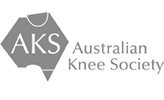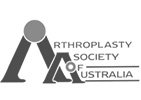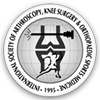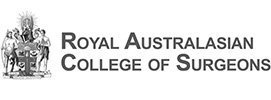ACL Reconstruction
This information sheet is designed to help you to understand what an Anterior Cruciate Ligament (ACL) Reconstruction involves.
For more information (and videos) go to my website www.kneesurgeonmelbourne.com.au
I perform ACL reconstructions frequently and my commitment to you is to perform the surgery to the highest possible professional standards using the best available equipment, components, staff, and hospitals. If you have any problems or concerns at any stage please let me know so we can work together to achieve the best possible outcome.
ACL Injury is a common problem in which one of the main ligaments which keeps your knee stable to walk on is torn. The ACL is a thick fibrous band that sits in the centre of your knee and holds the femur and tibia bones firmly together. It prevents the bones from sliding back and forth too much when you walk and run, and particularly when you change direction quickly.
The ACL is usually torn by a sudden twisting or over straightening movement. This most commonly occurs during sporting activities such as netball and football. Most people feel something give way or “pop” inside their knee and struggle to keep playing. The knee will usually become quite swollen, stiff and painful. Often it improves over the first couple of weeks after the injury and most people can begin to walk again.
The problem with a torn ACL is that it doesn’t heal very well and therefore people are often left with an unstable feeling in their knee. Some people have very few symptoms once their knee has recovered from the initial injury, and they do not require surgery. However a lot of people who have torn their ACL feel that they cannot trust their knee and may even have episodes where the knee gives way on them. This is particularly likely if they play twisting or pivoting sports. These people should have surgery to make the knee feel stable and prevent further damage to the surfaces of their knee. This surgery is called an ACL Reconstruction.
ACL Reconstruction
You will be admitted to hospital on the morning of your operation. The nursing staff will meet you on your arrival. The anaesthetist will see you before your operation and go over your medical conditions and discuss the anaesthetic. I will see you on the day of your operation, before the surgery, and draw an arrow on your knee to confirm which side we are operating on and to answer any of your questions.
Your operation is performed under a general anaesthetic (completely asleep). The risks of the anaesthetic will be explained to you prior to your operation by the anaesthetist. Your risks associated with the anaesthetic are largely related to your general health, so please let us know about all of your medical history. In particular we need to know about any problems you may have experienced with previous anaesthetics, diabetes, heart conditions and any blood thinning tablets that you may be taking (such as Plavix, Clopidigrel and Warfarin). These will need to be stopped or replaced some days prior to surgery. I am usually happy for people to stay on Aspirin.
Your operation takes about one hour to complete. During this time a tourniquet is compressing your thigh to prevent bleeding. The surgery is performed through several small cuts around your knee. The longest one is about 4cm long over the front of your shin.
Through the skin incision we remove two of the hamstring tendons from the back of the thigh. We then look inside your knee through two small, key-hole, incisions. Through these small holes we look around the inside of your knee and find the damaged areas. In addition to the torn ACL there are often other parts of the knee that are damaged. The most common of these are the menisci – these are crescent shaped cushions of cartilage that sit between the surfaces of your knee. They are very often torn at the same time as an ACL injury. If this is the case then we will need to either remove the damaged parts of the cartilage or, if possible, repair them by stitching them back together.
The torn stump of the ACL is then removed to make room for a new ligament. Tunnels are drilled through the tibia (shin bone) and femur (thigh bone) and the new ligament (made out of the hamstring tendons) is passed through the tunnels and across the knee. The new ligament is then held firmly in place with a small metal button that sits on the surface of the femur bone and a screw which sits inside the tunnel in the tibia and an additional metal staple to hold the graft on the tibial side.
In some cases an additional procedure will be added to the ACL reconstruction at the time of surgery to improve the stability of the knee. This is called a lateral extra-articular tenodesis (or LET). It is performed in patients with a high risk of repeat ACL injury – often younger people, people with loose joints and at the time of revision (re-do) ACL reconstruction. It involves an extra incision on the side of your knee and the transfer of the thin strip of the tendon on the side of your knee. It has been shown to reduce the risk of the ACL breaking again but does require an additional incision and creates more pain and swelling than the isolated ACL reconstruction. As a result, I only perform this additional procedure in a small number of patients and discuss it with them prior to the surgery.
The knee is then washed out to remove any debris. Local anaesthetic is injected to decrease pain after the surgery and the wounds are sewn up. Dressings are placed to cover the wounds and a bandage is wrapped around the knee. A splint is then placed over the bandages.
After the operation
It is likely that you will be away from the ward for about four hours in total due to time preparing for the surgery and recovering afterwards.
After the operation you will wake up in the recovery room with a large bandage on your knee. After an hour or two in the recovery ward you will be transferred back to your room on the ward. Once you are back on the ward the nurses will check the circulation and movement in your foot. If your knee is sore talk to your nurse and they will arrange pain relief.
The morning after the operation physiotherapists will see you and explain the exercises that you will need to perform. They will also get you to stand up and show you how to use crutches. You will be wearing a knee brace to help support your knee when you first start to walk but once you get home you are welcome to remove the brace and walk without it. You will be shown exercises to perform each day to improve your range of motion and to keep your muscles working.
You are likely to be allowed to go home the day after your operation once your pain is controlled and you are safe on the crutches. Before you leave hospital most people are able to walk using crutches and negotiate a few stairs. You should be able to largely look after yourself at home but it is best to have someone else around so that you can rest the knee for the first few days.
Before you go home, the physiotherapists will give you a series of exercises to perform every day. In addition they will help you organise ongoing outpatient physiotherapy. This can either be with the hospital physiotherapists or with a physiotherapist of your own choice. For the first two weeks after the surgery you only need to perform the exercises given by the hospital physio. You should arrange your outpatient physio visit for after I review you – around two weeks after the surgery.
When you book the surgery my secretaries will usually arrange your follow-upappointment to see me again around two weeks after the operation. If the appointment isn’t made please contact my office during working hours (ph. ) and we will arrange it.
Going Home
After ACL reconstruction it is normal for your knee to be sore for several days. However, the amount of pain experienced varies a lot between patients. You will be sent home with some pain-relieving tablets. These may include Panadeine Forte, Oxynorm or Tramadol. As your pain settles you should be able to change to standard Paracetamol and/or Nurofen. Rest, elevation, and ice packs can also help to reduce the pain and swelling.
It is very important to regain as much movement of the knee as soon as possible after the surgery. You should perform the exercises each day. While these exercises may cause some pain and swelling around the knee, they are safe to do and will not do any harm.
If the knee starts to become increasingly painful after you have gone home try resting it, putting on an ice pack and taking some pain relief. If it doesn’t settle or you develop any signs of an infection, such as a temperature or increasing redness around the knee, then contact my office (ph. 9459 6611), the hospital, your GP or local emergency department.
The bulky bandage can be removed from the knee after the first 48 hours. The plastic dressings covering the wounds should be left in place until I remove them at the two week appointment. They are waterproof and it is safe to shower over them. It is common for there to be some dried blood visible on the dressings. If there is any ongoing bleeding or leaking from the wound or any signs of infection please contact my rooms. You will often notice a large amount of bruising at the back of your thigh and extending down the side of your calf all the way to your ankle. This can look quite dramatic but it is unavoidable and nothing to worry about. The stitches in your knee are mostly absorbable, however a couple of them will need to be trimmed at the two week appointment.
At the two week appointment I will check that you are recovering good muscle strength and movement. If you are making good progress you will be able to walk without crutches. After two weeks you will need to begin regular physio visits, so have a think about where you would like to go. You are welcome to use one of the physios you saw in hospital (Total Physiocare) or you can find any sports physiotherapist close to home. You will need to see them at least once a week for a couple of months.
For the first few weeks the most important job is to regain full movement. After you have good movement you will concentrate on strengthening muscles and regaining stability before working on return to sport. It is common to use an exercise bike after a few weeks but running is delayed until 3 to 4 months.
Your physio will give you details of your rehabilitation schedule.
Some Complications of ACL
- Occasionally people may struggle to regain full movement after ACL reconstruction. In particular it can be very difficult to regain the last little bit of straightening or over-straightening. The answer is usually more physio, but occasionally we may try further surgery to remove scar tissue to get the best possible final result.
- Infection in the wounds or even inside the knee joint occurs in about 1 in 500 operations. It can require antibiotics or further surgery to wash out the infection.
- DVT (deep vein thrombosis) is a blood clot that forms in the leg veins and can occasionally break off and go to the lungs (pulmonary embolism). It can happen after any surgery and usually causes increasing pain in the calf muscle a few days after the surgery. To decrease your risk of a DVT you may be given injections (Clexane) during your stay in hospital. DVT is more common in people who have had one before, so let us know if you have experienced a DVT previously. If you develop increasing pain and swelling in the calf or ankle in the first few weeks after the surgery you will need to see your doctor or emergency department urgently to get an ultrasound scan of your leg to exclude a DVT.
- Tender scars and numb patches – the skin incision will often cut small skin nerves causing a tender spot or a numb area in the skin next to the scar. This tends to get smaller and less uncomfortable with time. Many people are left with a permanent numb patch at the front of the knee.
- Nerve or blood vessel damage is a very rare but very serious complication of knee surgery. If the nerves to the leg are damaged it can cause paralysis and loss of feeling. If the blood vessels are damaged they may need to be repaired and there is a risk that the leg may not get enough blood flow. Luckily this is extremely rare.
- There is a risk that the new ACL graft may re-break or stretch out and become less effective. This usually happens with a new injury. The risk of this happening is about 5% (5 out of every 100) if you return to pivoting sports. It most commonly happens in the first few months after the surgery if you twist the knee. The highest risk is for teenagers having ACL reconstruction who may have up to a 20-25% chance of rebreaking the graft. Because of this I recommend that you delay returning to pivoting or contact sports (such as football, netball, tennis) until 12 months after the operation. This gives the new ACL time to become as strong as possible.
- Most people who have an ACL reconstruction are able to return to the same level of sports that they were playing before the injury. However the knee sometimes does not feel quite as strong or stable as it did before the injury.
- When you break you ACL you are very likely to also damage the cartilage surfaces of the knee joint. In the long term this may be very important as damage to the cartilage makes you more likely to have problems with osteoarthritis in the future.
If you have any further questions after reading this information please contact my rooms and arrange another time to talk to me. I also suggest that you read the accompanying College of Surgeons handout on ACL Reconstruction for further details.
Checklist for ACL Reconstruction
- Confirm the correct date with the hospital – they will also call you a day or two before your operation.
- Contact your insurance company to confirm that you are covered for ACL Reconstruction. They will ask you for the Item Number for the operation, which is likely to be 49542.
- Check my website page “Cost of surgery” or contact my secretaries if you have any questions
- Stop taking blood thinning tablets - for example Plavix and Warfarin will need to be stopped several days prior to the operation so call me to confirm details.
- Avoid infections – if you have any scratches or broken skin on your legs or any infections anywhere in your body (including urinary infections and dental infections) your surgery may need to be delayed. So let us know if you have any problems in the days before you come to hospital.
- Bring all of your x-rays to the hospital – we do not routinely keep patient x-rays so if you think we have yours please call to check. If you never received copies of your X-rays then they are probably available to us online.
- Bring all of your usual medications to the hospitals
If you have any problems or concerns about your knee surgery please let me know so we can work together to get you the best possible outcome.
ACL Reconstruction Hamstring Method
ACL Reconstruction Patellar Tendon
"Any surgical or invasive procedure carries risks. Before proceeding, you should seek a second opinion from an appropriately qualified health practitioner."










